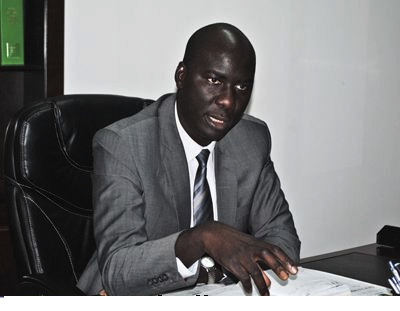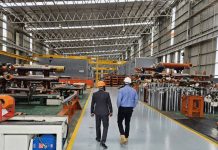Following Zambia’s 29 April 2021 mining indaba, at which the promise of a review of mining tax policies renewed hopes that the country may be back in the running as a viable investment destination, an online conference on 26 May brought stakeholders together to discuss the mining sector’s potential to ignite an economic recovery. The 10th Zambia International Mining and Energy Conference (ZIMEC) sparked a lively discussion around the specific measures needed to set this recovery in motion, under the theme ‘Dialogue and Partnerships — Unlocking Investment, Recovery and Growth’.
Here, Mining For Zambia shares the highlights from this productive multi-stakeholder engagement.
Permanent Secretary of the Ministry of Mines and Minerals Development, Mr Barnaby Mulenga, set the tone with a decisive opening remark about mining being an inherently long-term investment, which requires consistency in policy. Mr Mulenga expects to see laws enacted to ensure stability in the mining tax regime, based on the issues raised during the recent mining indaba.
He and each of the ZIMEC participants expressed hopes that Zambia will take advantage of the opportunity that a global shift towards a green economy — and its requisite copper demands — presents. Government, he noted, will benefit from this growth through mining companies’ contribution in the form of taxes and job creation. “We must position ourselves to benefit from this increase in the copper price so that the benefits extend to the Zambian people,” he said.
Green energy is the opportunity of a lifetime for Zambia
“The shift towards green energy generation and electric vehicles is possibly the most immense demand opportunity that the copper mining sector has ever seen, and it’s expected to make the previous supercycle, driven by China’s growth, pale in comparison,” said Mr Sokwani Chilembo, CEO of the Zambia Chamber of Mines. Mr Karan Rathi, Board Director of Chillerton Group agreed, pointing out that in order for countries like China, the USA, and the UK to realise their goals of becoming carbon neutral within the next three decades, they will have to rely on critical metals: copper, cobalt, and nickel — and Zambia is extremely well-endowed with all three. “The amount of influence that Zambia will yield in the years to come is very, very important,” he said. Mr Chilembo agreed: “With the correct environment, Zambia will become a magnet for mining capital investment.”
What is standing in Zambia’s way?
Zambia’s tax burden is the highest among the world’s top ten mining jurisdictions, and its mining tax regime has gained a reputation for unpredictability, with changes being made to policy every 18 months, on average, between 2003 and 2019. As a result, we are seeing capital being invested in competing jurisdictions that have lower grade resources, but a better fiscal environment, Mr Chilembo pointed out.
“With the correct environment, Zambia will become a magnet for mining capital investment.”
Asked by the moderator of the ZIMEC panel, Ms Nakasama Banda Chanda, whether Zambia’s mining companies are taking advantage of high copper prices and the metal’s key role in the “green revolution,” the consensus among panellists was ‘No.’
Dr Tembo, a Mining and Energy Specialist at the Zambia Institute for Policy Analysis and Research (ZIPAR), warned that frequent changes to the mining tax regime “generate negative sentiments in the industry” which cause “uncertainty at the policy level”. Mr Rathi explained how the current environment deters investment because an unstable regime makes it impossible for investors to make concrete plans for deploying long-term strategic capital. “As mining companies, from the date of inception, our banks and our lenders give us money at certain interest rates — and that’s factored into our bottom line,” he said.
Malcolm Jhala, Associate Director at PwC’s Tax Practice, explained that increases in the copper price do not necessarily lead to increased profitability for mining companies, or a resulting increase in Government revenue from mineral royalties and profits-based taxes. “Taking full advantage of this commodity supercycle can only be unlocked if we have a conducive mining tax regime,” he said.
What is a “conducive mining tax regime”?
A conducive regime is one that enables the industry to afford the cost of capital
The cost of capital is pivotal in the mining industry, explained Mr Chilmebo, given its capital intensive nature. It is imperative that mining companies have capital to reinvest in order to sustain operations, without which growth is impossible. This is especially true in an industry where both assets and equipment deteriorate with time, leading to compromised safety and efficiency.
For several years, members of the Chamber of Mines have been unable to afford the international cost of capital, instead relying on cash injections from shareholders to keep operations running, which is unsustainable, he explained.
“Taking full advantage of this commodity supercycle can only be unlocked if we have a conducive mining tax regime.”
Mr. Jhala agreed, saying that only with increased investment in exploration, mining and mineral processing, can Zambia’s Government and its people benefit from an increased contribution from the mining industry. This contribution takes the form of mineral royalties, profits-based taxes, job creation and, in Mr Mulenga’s words “other incentives that mines extend to communities.” Mining’s economic multiplier effects are entirely dependent on the sector’s growth and sustainability.
But, in order to attract investment capital, Zambia has to compete with other resource rich countries, and provide investors with a fiscal regime that’s responsive to the market — and, naturally, predictable too.

A conducive regime encourages investment
According to these experts, now is a crucial moment to remove the barriers standing in the way of Zambia’s acquisition of investment capital. The odious non-deductibility of mineral royalty tax is one of the mining tax regime’s two biggest bottlenecks, they agreed. The current mineral royalty non-deductibility policy prevents mineral royalties from being deductible against corporate income tax, which disincentivizes investment.
Mr Jhala explained: “You pay mineral royalty on your top line (which is your revenue), and then you are also hit on the profit side because the expense is not allowed as a deduction, so you’re effectively taxed on the same income twice.”
Doing away with this system of double taxation immediately makes us competitive
Namibia recently entertained the idea of introducing a policy of mineral royalty non-deductibility just like the one in place in Zambia, but a series of public-private sector stakeholder engagements lead to its abandonment late last year. In the six months since then, the country has attracted hundreds of millions of dollars and over five new mining projects.
Meanwhile, in Zambia, two game-changing investments hang in the balance. Kansanshi Copper Mines is awaiting a better fiscal environment in order to begin a $1 billion expansion project which includes a new smelter, and Lubambe Copper Mine intends to expand its operations in Chililabombwe in a move that would add increase copper production by 150,000 tonnes per annum for the next 45 years.
A “conducive regime” is one that works for all stakeholders
The current mineral royalty regime has a “fundamental structural issue,” in that royalty rates jump up at certain price thresholds, removing predictability for mining companies, which have no way of knowing when the higher mineral royalty tax band will next be triggered. The panellists shared several Zambian experts’ views in proposing a sliding scale which mirrors how Pay As You Earn (PAYE) tax operates, which will create more predictability.
With the right environment, what growth in mining tax revenue can Government expect?
“Because Government is listening now — since the indaba’s successful stakeholder engagement — I expect we’re going to see a lot more investments coming through to take advantage of the high copper prices and the stable regime that’s likely to come,” said Mr Jhala. Increases in production will follow new investments which, in turn, will increase the mineral royalty take, along with Government’s take from corporate income tax.
Policy needs to be flexible enough to handle low and high prices, ZIMEC’s panellists agreed. “Once we do away with investor uncertainty, the industry can focus on the business of mobilising capital to increase production,” said Mr Chilembo. “If you strategically ring-fence mining growth, all other growth in the economy will be corollary to that and, if you get that right, the overall economy will grow,” he added.
The common ground reached at the indaba can pave the way for Zambia’s economic recovery
“Government wants to maximise revenue and the mining companies want to maximise returns. It’s the middle ground somewhere in between that the indaba sought to identify,” said Mr Jhala. He suggested that “a climb down” may be necessary in the short-term while the regime is being changed, but a commensurate return to Government revenues will follow in the long run.
“Overhauling the mining tax regime in Zambia requires a holistic approach that ensures we incentivise exploration expenditure and increase production to take full advantage of the commodity supercycle. I think positive strides came out of the indaba.”
The Ministry of Mines and Minerals Development’s Chief Mining Engineer, Mr Brighton Kateka, offered his closing remarks: “The mining indaba was held specifically to discuss these very things, so that we can have a very, very stable regime. We need to be sincere, we need to be transparent, we need to trust each other, and there must be confidence developed between industry and Government. I hope these discussions yield something very fruitful at the end of the day.”
Mr Chilembo commended the ministry’s “great leadership” in welcoming multi-stakeholder discussions such as these. “It is our hope that, going forward, we can foster enough confidence to have everybody come on board to present that picture of Zambia as the optimal destination for mining capital worldwide,” he said in closing.
***
Image of Barnaby Mulenga via zambianbusinesstimes.com
See also: Is the world seeing the future of Zambia’s mining sector in a new light?
























This is Great.
A number of potential investors are interested and seeking Partnership with Zambians in the Mining, Processing and Exporting of Copper, Cobalt, Gold and other Minerals.
Kindly advise.
Best Regards.
WhatsApp:+260764477342
It is interesting to note that the focus of this ‘indaba’ was more on acquiring capital to increase investments through more exploration. My expectations were that two major variables of market control and value addition should have been priority. Without a big stake in market control and value addition Zambia will continue singing the same old song. I think it’s high time we started looking at the future and looking backwards. My two penny.